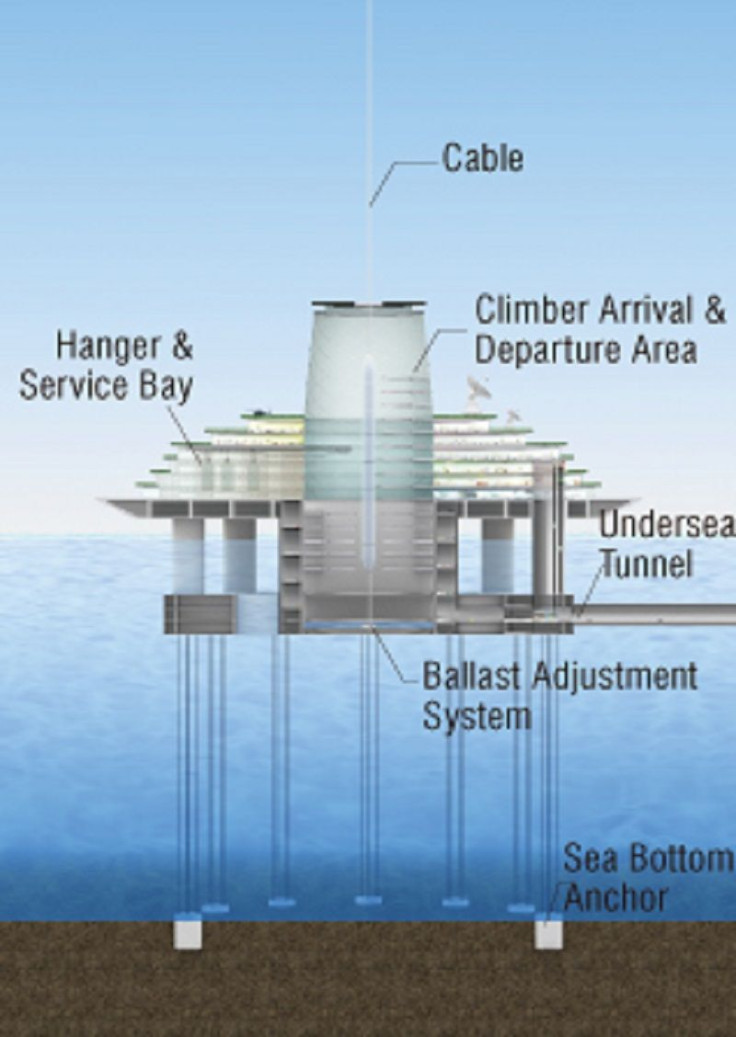Diamond nanothreads could be key to construction of space elevator that Japanese firm Obayashi says will be operational by 2050

A new discovery by Penn State University researchers on how to produce ultra-thin diamond nanothreads could hold the key to space elevators that Japanese researchers are planning. A space elevator that Obayashi, a Japanese construction company, will build would likely be operational by 2050.
Using robotic cars powered by magnetic motors, it would be the longest elevator ride as it would take seven days to complete a one-way ride. That’s because the planned space elevator would travel 96,000 kilometres into space, carrying 30 people per trip, reports CNBC.
Obayashi would use carbon nanotechnology to build the elevator. The firm is using carbon nanotechnology because its tensile strength is almost a hundred times stronger than steel cable, explains Yoji Ishikawa, research and development manager of Obayashi.
He explains that the current technology cannot manufacture cable long enough since Obayashi could only make three-centimetre-long nanotubes. Ishikawa adds that by 2030, he believes such technology would be available.
To share technology, Japanese universities hold annual competitions to develop stronger cables. At Kanagawa University, a team is developing robotic cars or climbers by studying mechanisms needed to ascend various altitudes and the best brake system, discloses Professor Tadashi Egami.
However, in December, Penn State scientists created a long, thin strand of carbon atoms arranged similar to a diamond’s structure. It has zig zag cyclohexame rings of six carbon atoms bound together where each carbon is surrounded by other carbons in the shape of tetrahedron. Howstuffworks explains that the nanothread would be similar to a necklace strung together from the smallest possible diamonds that super stiff and strong.
Although a 2012 study found the project feasible, it could best be achieve with international cooperation since one company cannot make it alone, Ishikawa says. Once built, the space elevator would end the construction and use of Earth-based rockets, say experts.
Current cost of making a space shuttle is $22,000 for every kilogramme, while it would cost only $200 per kilo for the space elevator. Besides the lower cost, the space elevator would also remove the large amount of fuel needed to break the Earth’s gravitational pool and could likely boost space tourism.
Science fiction author Arthur C. Clarke made popular the concept of a space elevator in his 1979 novel “The Fountains of Paradise.” It was based on the initial 1895 concept by Konstantin E. Tsiolkovsky, a Russian space scientist.
Obayashi, in an update in November, shares that besides the carbon nanotube cable, there would also be a 400-metre diameter floating Earth Port and 12,500-tonne counterweight. There would also be Martian/Lunar Gravity Centres, a Low Earth Orbit Gate, a Geostationary Earth Orbit Station, a Mars Gate and a Solar System Exploration Gate.
LiftPort successfully kickstarted a space elevator to the Moon by sending a robot two kilometres up through a cable. But the team managed to make only a quarter of a mile shy from the target distance before it went out of business in 2007, according to NASA.
However, with international cooperation and more discoveries on nanotechnology, the space elevator could move from science fiction into a reality with the next 35 years.




















